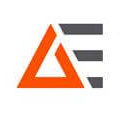How to Calibrate a Temperature Probe
投稿 4月 05, 2019 によって Advanced Energy Editor
To calibrate a temperature probe, you need to know a few basic details about the temperature probe itself and a bit concerning the physics involved.
The temperature probe
For starters, you need to know the type of sensor in the probe. Is it a thermocouple sensor, an RTD sensor, a thermistor sensor or a solid-state sensor device? You need to know this so you can set up the proper electronics to measure the probe output at various temperatures.
Next, you need to know if the temperature probe can be submersed in water. If not, possibly in oil, or, only in air. This is to help you select the necessary heat or cold sources you will need for your temperature measurement.
The physics
Many temperature measurement applications are centered around normal environmental conditions – between freezing water 0°C and boiling water 100°C. These temperatures can be duplicated relatively easily in most locations as long as you know the physics, and can thus be used to calibrate your probes.
Pure water boils at 100°C AT sea level.
Pure water freezes at 0°C (regardless of altitude)
To use boiling and freezing water as your test points, you have to use pure water for boiling and ice. Use distilled/demineralized water typically sold for steam irons, not just bottled or tap water. You also have to know the altitude of your location for the boiling temperature. You can go on the Internet and quickly get the boiling temperature of water for that altitude. For example, the boiling point of water at 5000 ft above sea level (i.e. Denver CO) is 94.98°C (202.97°F). Note: boiling is dependent on vapor pressure while freezing is not. That is why the boiling point is affected by altitude while water freezes always at 0°C regardless of altitude. Both are affected by minerals and chemicals in the water which is why you need to use pure water.
To make a calibration ice bath
- Use pure water to make ice and then crush the ice to pieces smaller than 1 cm.
- Fill the container to the top with the crushed ice (an insulated container is best).
- Fill the container to within 1.5 cm of the top with pure water.
- Insert the temperature probe in the middle of the container (horizontally and vertically) and stir in a small circle. This is your 0°C reference point (if doing multiple probes at the same time, keep them in a small group together).
To make a boiling point reference
- Fill a container to within 3 cm of the top.
- Bring to a constant boil using a hot plate or other heat source.
- Suspend the probe half-way down and in the middle of the bath.
This is your boiling reference. (If doing multiple probes at the same time, keep them in a small group together.)
You should use a high-accuracy electronic, digital thermometer to read the probe outputs. Normal metrology practices are to use a readout instrument that is at least 4x more accurate than the accuracy you need. For 1° accuracy, use a thermometer with at least 0.25° accuracy.
You now have two known points for your temperature probe. Many high-end electronic thermometers also allow you to set-in a zero offset for the probe. Most response curves for sensors are non-linear so a 2° offset at zero does not directly translate to a 2° shift at 100° but the electronics take care of that. Setting-in a zero offset will make all your readings more accurate and save you the time and effort to subtract the error yourself.
If you are using a temperature probe at high temperatures – let’s say 800 to 1200°C – you will need $5000 test gear or you can use the “test probe” method and your existing oven. You use an outside lab-calibrated probe next to your probe in your oven as your “standard” to validate an oven temperature and then read your temp. probe and compare readings. Allow enough time for the temperature to stabilize at high temperatures. This gives you the error at the high end. Then use an ice bath to get the zero point as described above.
If you are in-need of temperature probes and sensors for your operations, TEGAM designs, engineers and manufactures an array of these temperature measuring tools for various applications and solutions. We feature RTD temperature probes, thermistor probes, and thermocouple probes for research and production requirements as well as a full line of digital thermometers for multiple industries.
Please contact us with questions and queries on our durable and accurate thermometry products.
